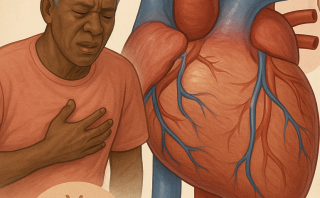
Hey readers!
Cholesterol is always portrayed as a villain but here’s where it gets interesting; our body needs cholesterol to synthesize hormones and vitamins. The liver generates enough cholesterol to handle these tasks, but your body doesn’t just get cholesterol from your liver. Cholesterol is also in the diet that we intake, such as meat, dairy, and poultry.
This cholesterol that we intake in our diets is classified as good cholesterol (high density lipoprotein) and bad cholesterol ( low density lipoprotein).
Why are these important? You’re about to know in just a minute! These lipoproteins molecules are made of fat and proteins and transport cholesterol within the body.
Now HDL is termed as “good” cholesterol because it helps the liver get rid of excess cholesterol so that it is present in the arteries and gets expelled from the body. But LDL does the opposite, it transports cholesterol to the arteries leading to its deposition. Too much cholesterol in the arteries leads to medical conditions like atherosclerosis. This can increase the risk of blood being blocked in your arteries leading to fatal medical conditions like a stroke or a heart attack.
Buildup of plaque may also reduce blood and oxygen flow to major organs. Deprivation of oxygen to your organs or arteries may lead to peripheral arterial disease or kidney failure , in addition to a heart attack or stroke.
Know the right numbers !
Want to know if your blood cholesterol is off the charts? Get a blood test done! When you receive the blood tests reports here’s what the information in it is going to look like:
Total blood cholesterol: This includes your HDL, LDL, and 20 percent of your total triglycerides.
Triglycerides: These are a common type of fat & should be below 150 mg/dL. If your triglycerides are high and your LDL is also high or your HDL is low, you’re at a potential risk of developing atherosclerosis.
HDL: The HDL levels should be at least higher than 55 mg/dL for females and 45 mg/dL for males.
LDL: The LDL levels should not be more than 130 mg/dL if you don’t have heart disease, blood vessel disease, or diabetes. It should not be more than 100 mg/dL if you have any of those conditions or high total cholesterol
Now comes the question, can we lower LDL levels? Yes ! This can be achieved , the trick is to curb the cholesterol and not the flavor 🙂
Here is a list of some of the foods that we can incorporate into the diet that will help lower LDL levels. These foods are a treat for the tastebuds, so you don’t have to sacrifice on flavor or fun.
1. Try some awesome avocados
Avocados are a rich source of oleic acid which helps keep the bad cholesterol at bay. Try putting a slice or two in your turnkey sandwich or salads. Use avocado oil for cooking
2. Go nuts
Nuts are high in PUFA or polyunsaturated fatty acids so having a little almond or pistachio as a snack always helps to lower the bad cholesterol. Just be sure that you choose the low-salt option, i.e about 1.5 ounces a day — nuts are also high in calories.
3. Fruitful change for a better you
Peaches , apples and citrus fruits have pectin which helps lower the LDL levels in blood. Berries are a rich source of fiber. So the next time you’re looking for something healthy, try switching to a berry smoothie for breakfast
4. Indulge your taste buds
Dark chocolate consists of flavonoids, antioxidants that help lower LDL levels. But beware! Eat dark chocolate in moderation as it is high in sugar and saturated fats. Healthier options include dark unsweetened cocoa powder for a healthier heart and a happy tummy
5. It’s tea time
Green tea and black tea both contain antioxidants that may help reduce cholesterol levels. Green tea is a better option given that it is less processed and contains unfermented tea leaves. Word of caution would be to go a little easy on the cream and sugar
Having uncontrolled cholesterol levels can leave a lasting impact on your heart and can lead to a diagnosis of coronary artery disease or congestive heart failure. Lifestyle changes and eating habits go a long way in the journey of staying healthy and fit. Having patients that are battling with heart conditions can be tough. We understand this and with that in mind we designed Fitpeo Congestive Heart Failure Remote patient monitoring care program.
Learn more by contacting us today!
